February 18, 2021
Harbour seals are familiar winter residents of Irving Nature Park’s shores on the Bay of Fundy. They are known as “sea dogs” because of their expressive, dog-like faces and barking cry.
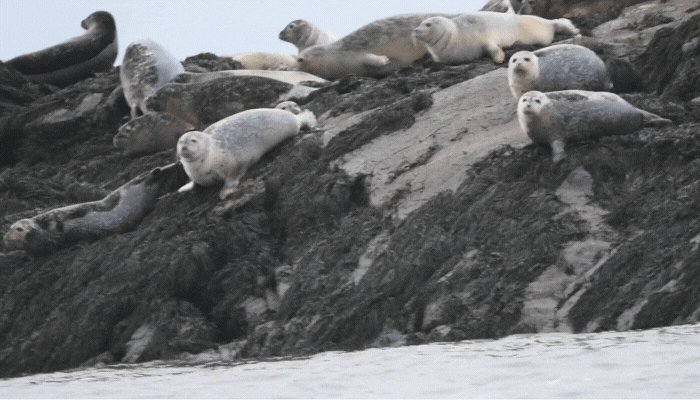 Photo courtesy of Melinda Foster.
Photo courtesy of Melinda Foster.
During the winter months at low tide, as many as 200 harbour seals (Phoca vitulina) can be seen splashing and diving in the water or basking in the sun on the rock outcroppings near the park’s observation deck. Although they live in salt water, harbour seals sometimes swim up the St. John River searching for food.
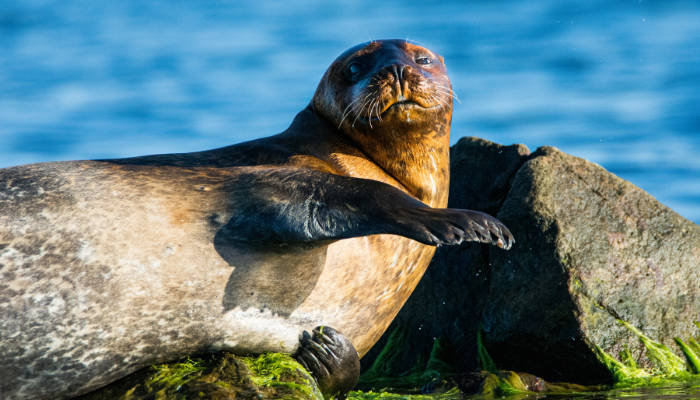 Photo courtesy of Melinda Foster.
Photo courtesy of Melinda Foster.
Seals - like all marine mammals - evolved as land animals, then returned to the sea, their arms and legs becoming modified into flippers. Like us, seals are warm-blooded and breathe oxygen. Adult seals may weigh as much as 113 kilograms and grow to a length of 1.5 metres.
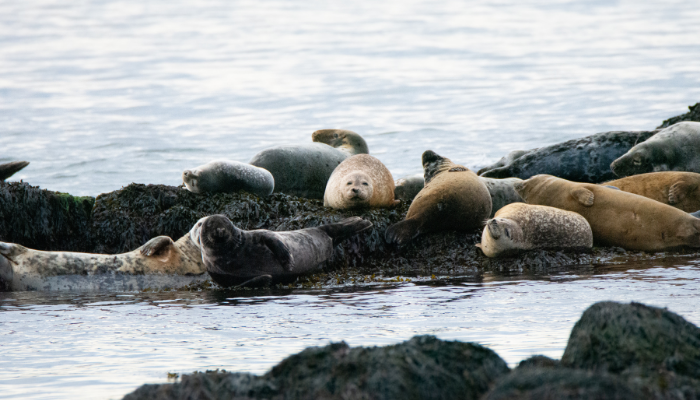 Photo courtesy of Melinda Foster.
Photo courtesy of Melinda Foster.
Harbour seals gather each winter into loosely organized colonies to mate. Usually only a single pup is born on land to each couple in late spring. Pups remain on land until they have built up a layer of blubber (fat) to insulate them from the cold water.
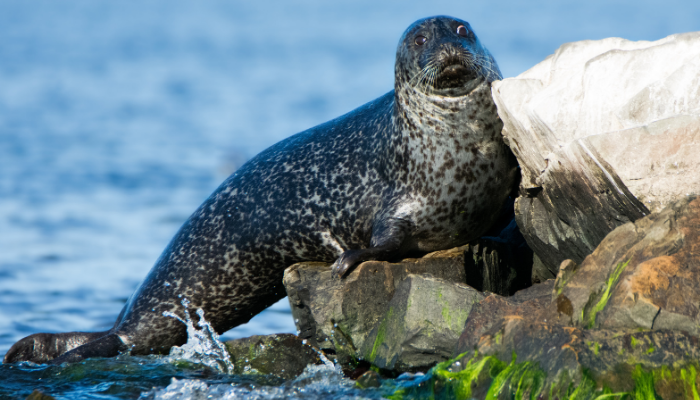 Photo courtesy of Melinda Foster.
Photo courtesy of Melinda Foster.
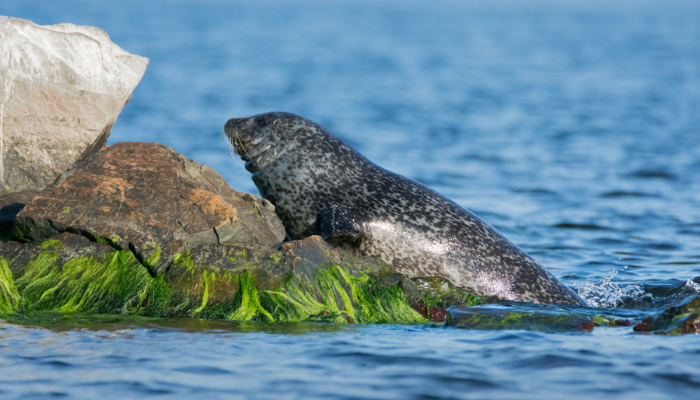 Photo courtesy of Melinda Foster.
Photo courtesy of Melinda Foster.
Seals wiggle on their bellies awkwardly on land; but they are excellent swimmers, with bursts of speed up to 15 knots (27 kph)! They eat fish such as herring and dive for invertebrates on the bottom.
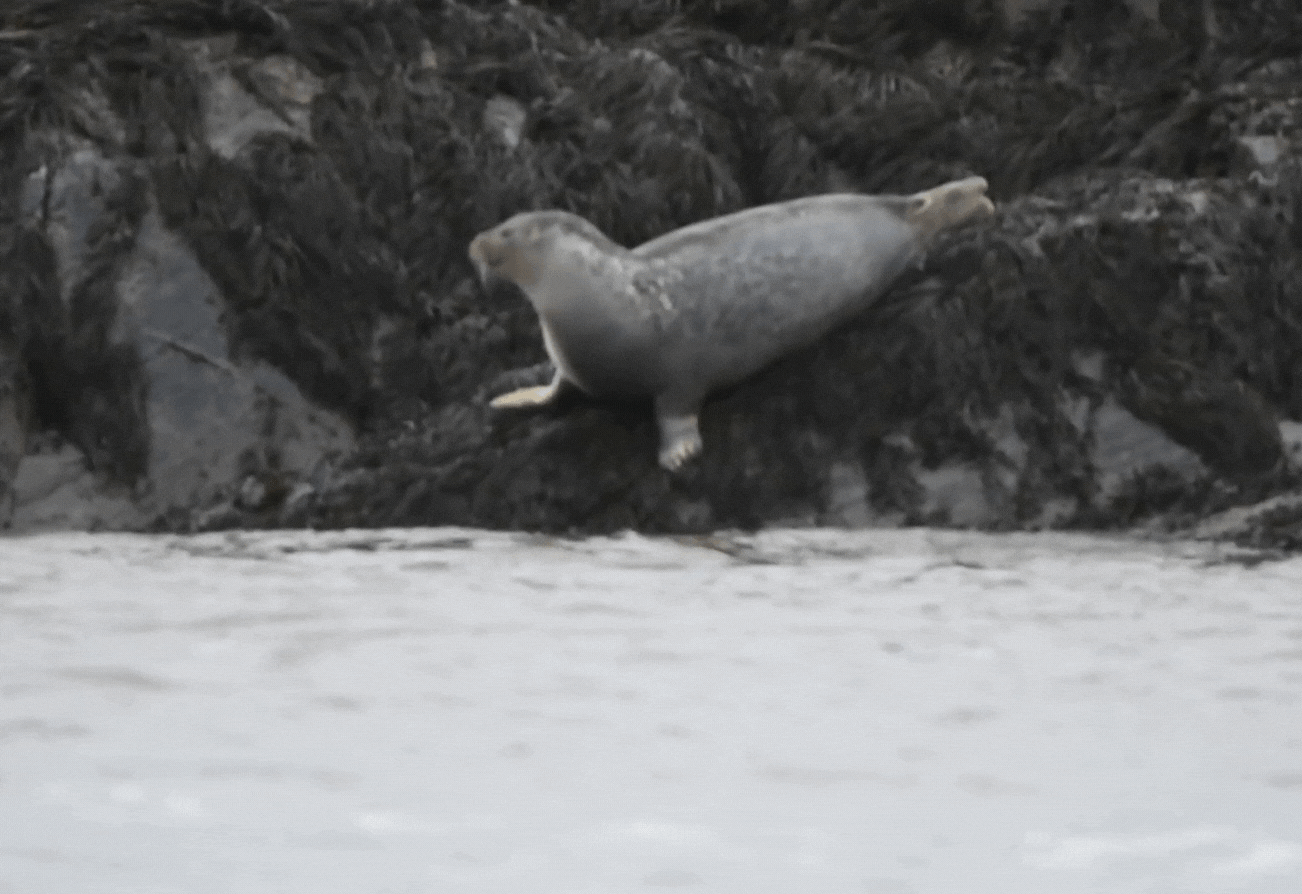 Photo courtesy of Melinda Foster.
Photo courtesy of Melinda Foster.
A dive can last as long as 15 minutes before they come up for air. During a deep dive the seal’s metabolism changes, the heart rate slows dramatically, and the blood flow to the extremities is cut off to conserve oxygen.
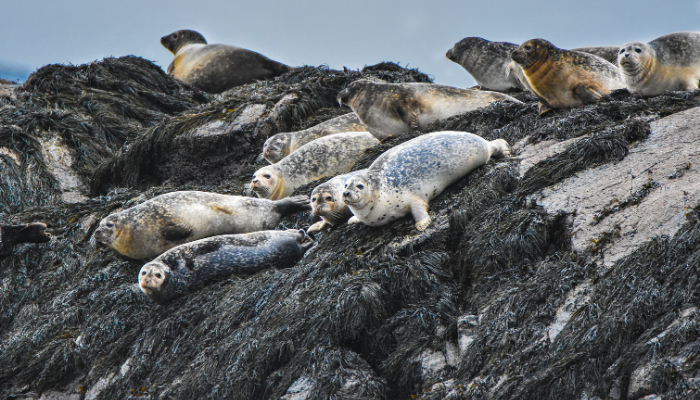 Photo courtesy of Melinda Foster.
Photo courtesy of Melinda Foster.
If you walk to Irving Nature Park’s observation deck this winter, you can watch these lively sea dogs having fun.
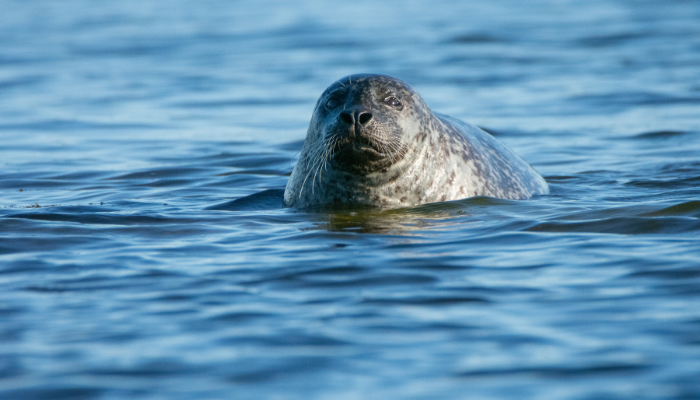 Photo courtesy of Melinda Foster.
Photo courtesy of Melinda Foster.
Details
Content provided by the Irving Nature Park.
The Irving Nature Park is a 600 acre (243 hectare) site created by J.D. Irving, Limited to help protect an environmentally significant area. This special part of the Fundy coastline, minutes from downtown Saint John, a major urban centre of New Brunswick, is now a place where the public can enjoy and experience the various ecosystems of the southern New Brunswick coastline.
Images provided by Melinda Foster Photography.
Melinda Foster is a local nature and wildlife, photographer. Her photos are available in print and canvas, as well as mugs, mouse pads, cell phone cases, puzzles, postcards, ceramic tiles, coasters and more.

 Photo courtesy of Melinda Foster.
Photo courtesy of Melinda Foster. Photo courtesy of Melinda Foster.
Photo courtesy of Melinda Foster. Photo courtesy of Melinda Foster.
Photo courtesy of Melinda Foster. Photo courtesy of Melinda Foster.
Photo courtesy of Melinda Foster. Photo courtesy of Melinda Foster.
Photo courtesy of Melinda Foster. Photo courtesy of Melinda Foster.
Photo courtesy of Melinda Foster. Photo courtesy of Melinda Foster.
Photo courtesy of Melinda Foster. Photo courtesy of Melinda Foster.
Photo courtesy of Melinda Foster.

